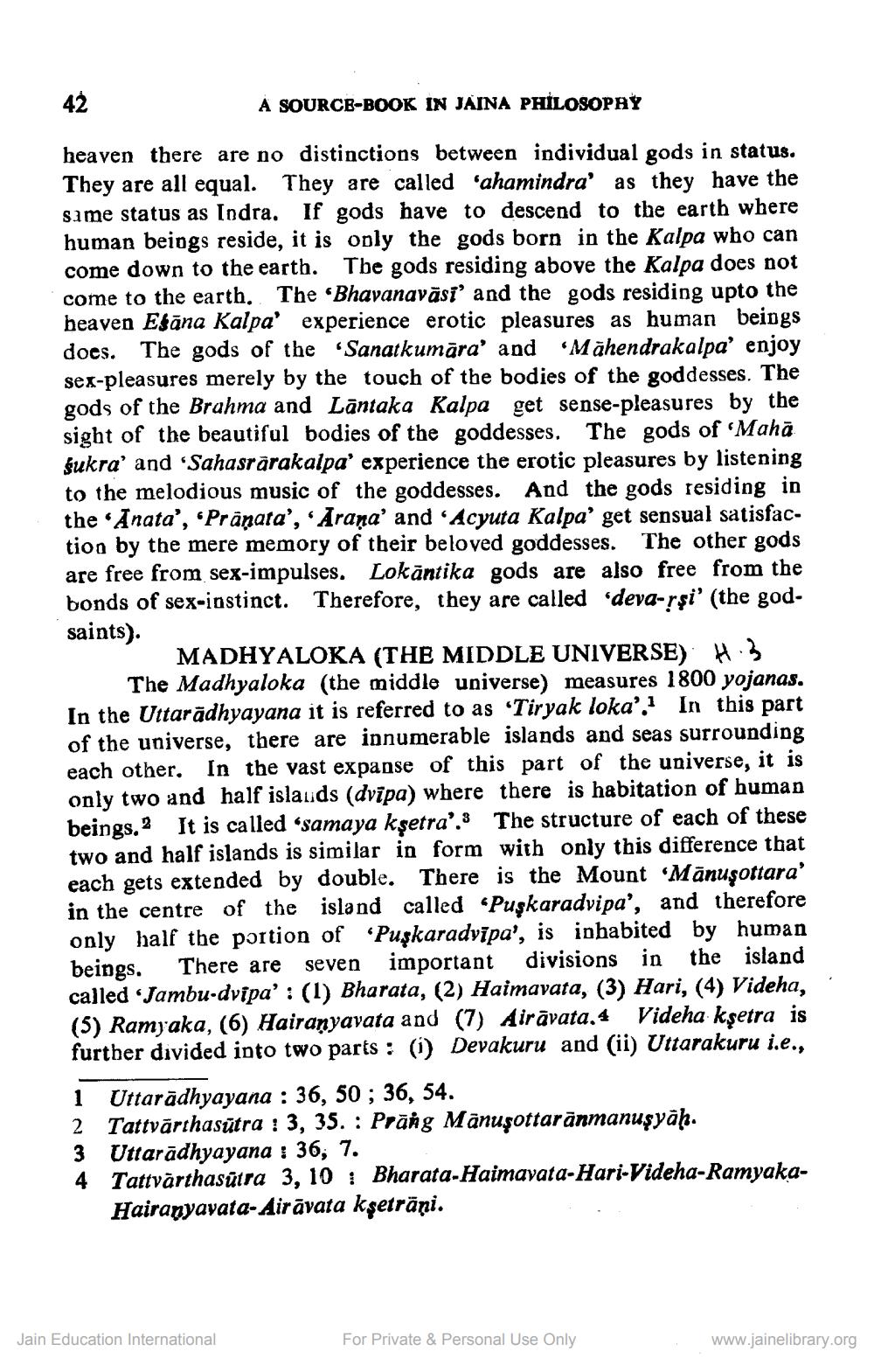________________
42
A SOURCB-BOOK IN JÄINA PHILOSOPAY
heaven there are no distinctions between individual gods in status. They are all equal. They are called 'ahamindra' as they have the same status as Indra. If gods have to descend to the earth where human beings reside, it is only the gods born in the Kalpa who can come down to the earth. The gods residing above the Kalpa does not come to the earth. The 'Bhavanavāsi' and the gods residing upto the heaven Esāna Kalpa' experience erotic pleasures as human beings does. The gods of the "Sanatkumāra' and 'Māhendrakalpa' enjoy sex-pleasures merely by the touch of the bodies of the goddesses. The gods of the Brahma and Lantaka Kalpa get sense-pleasures by the sight of the beautiful bodies of the goddesses. The gods of Mahā sukra' and 'Sahasrarakalpa' experience the erotic pleasures by listening to the melodious music of the goddesses. And the gods residing in the •Anata', 'Pranata', 'Arana' and 'Acyuta Kalpa' get sensual satisfaction by the mere memory of their beloved goddesses. The other gods are free from sex-impulses. Lokāntika gods are also free from the bonds of sex-instinct. Therefore, they are called 'deva-rși' (the godsaints).
MADHYALOKA (THB MIDDLE UNIVERSE) His
The Madhyaloka (the middle universe) measures 1800 yojanas. In the Uttarādhyayana it is referred to as 'Tiryak loka'.' In this part of the universe, there are innumerable islands and seas surrounding each other. In the vast expanse of this part of the universe, it is only two and half islauds (dvīpa) where there is habitation of human beings. It is called 'samaya ksetra'.3 The structure of each of these two and half islands is similar in form with only this difference that each gets extended by double. There is the Mount Mānuşottara' in the centre of the island called "Puşkaradvipa', and therefore only half the portion of "Puşkaradvīpa', is inhabited by human beings. There are seven important divisions in the island called .Jambu-dvipa': (1) Bharata, (2) Haimavata, (3) Hari, (4) Videha, (5) Ramyaka, (6) Hairanyavata and (7) Airāvata, 4 Videha kşetra is further divided into two parts: (i) Devakuru and (ii) Uttarakuru i.e., 1 Uttarādhyayana : 36, 50; 36, 54. 2 Tattvārthasūtra : 3, 35. : Prāng Mānuşottarānmanuşyāk. 3 Uttarādhyayana : 36, 7. 4 Tattvärthasūtra 3, 10 Bharata-Haimavata-Hari-Videha-Ramyaka
Hairanyavata- Airāvata kşeträni.
Jain Education International
For Private & Personal Use Only
www.jainelibrary.org




